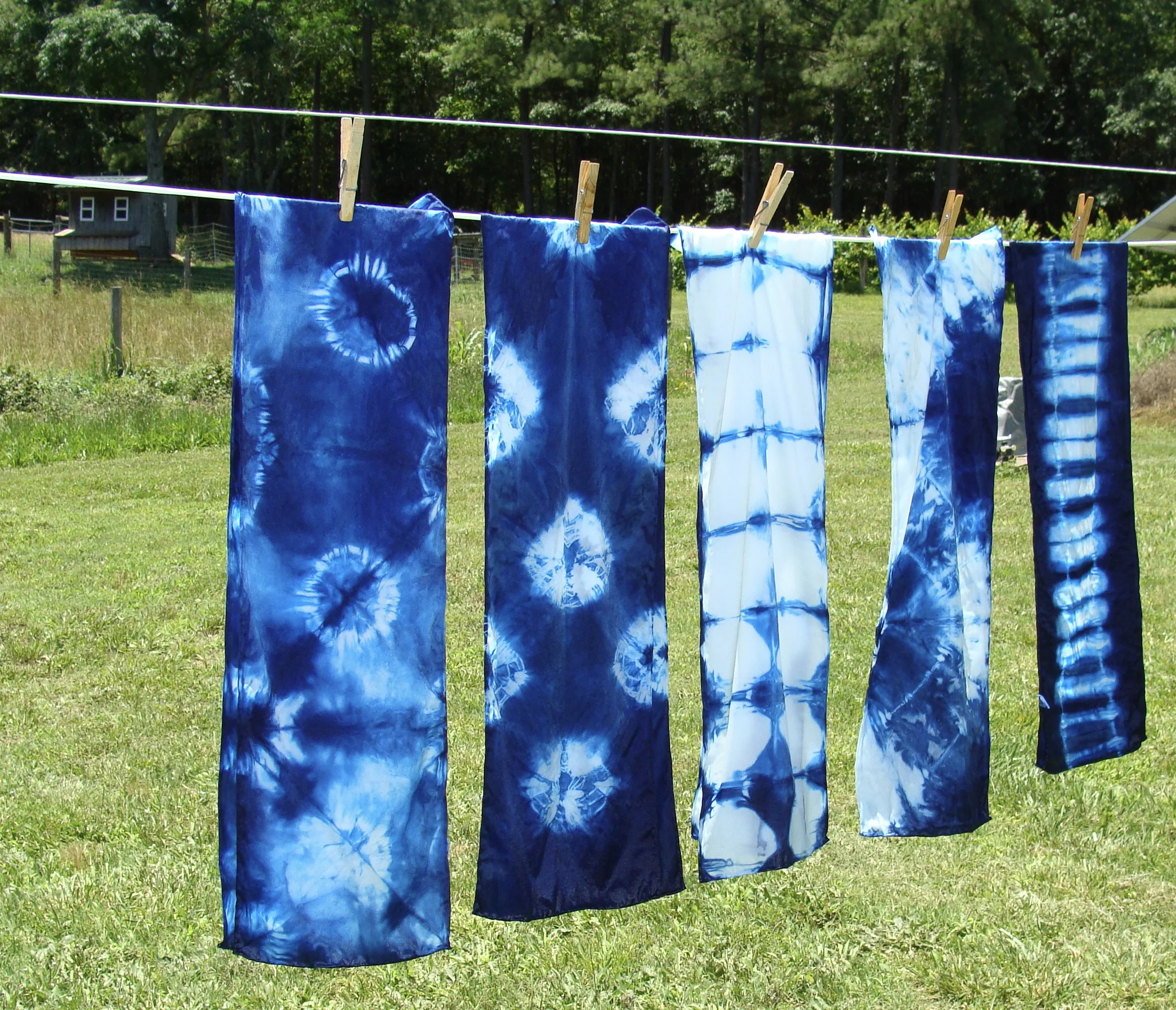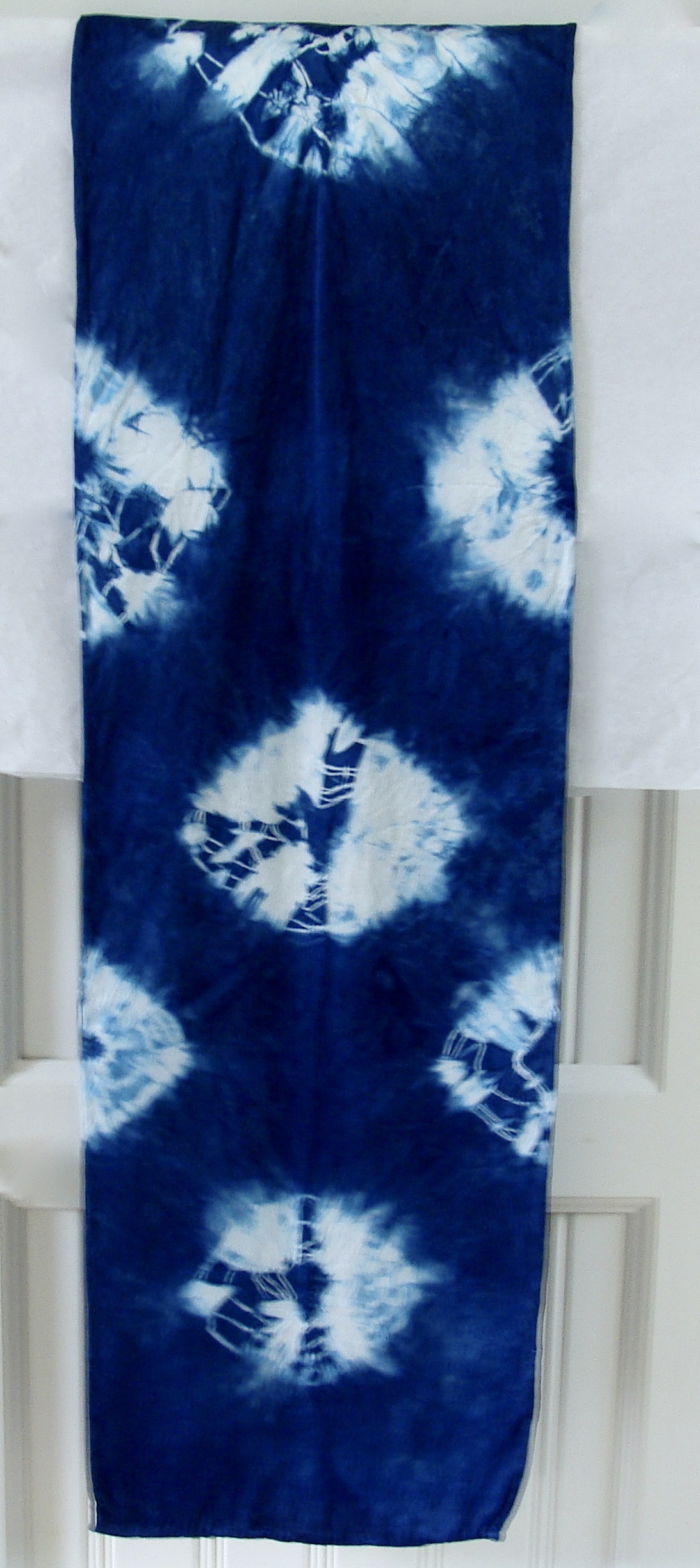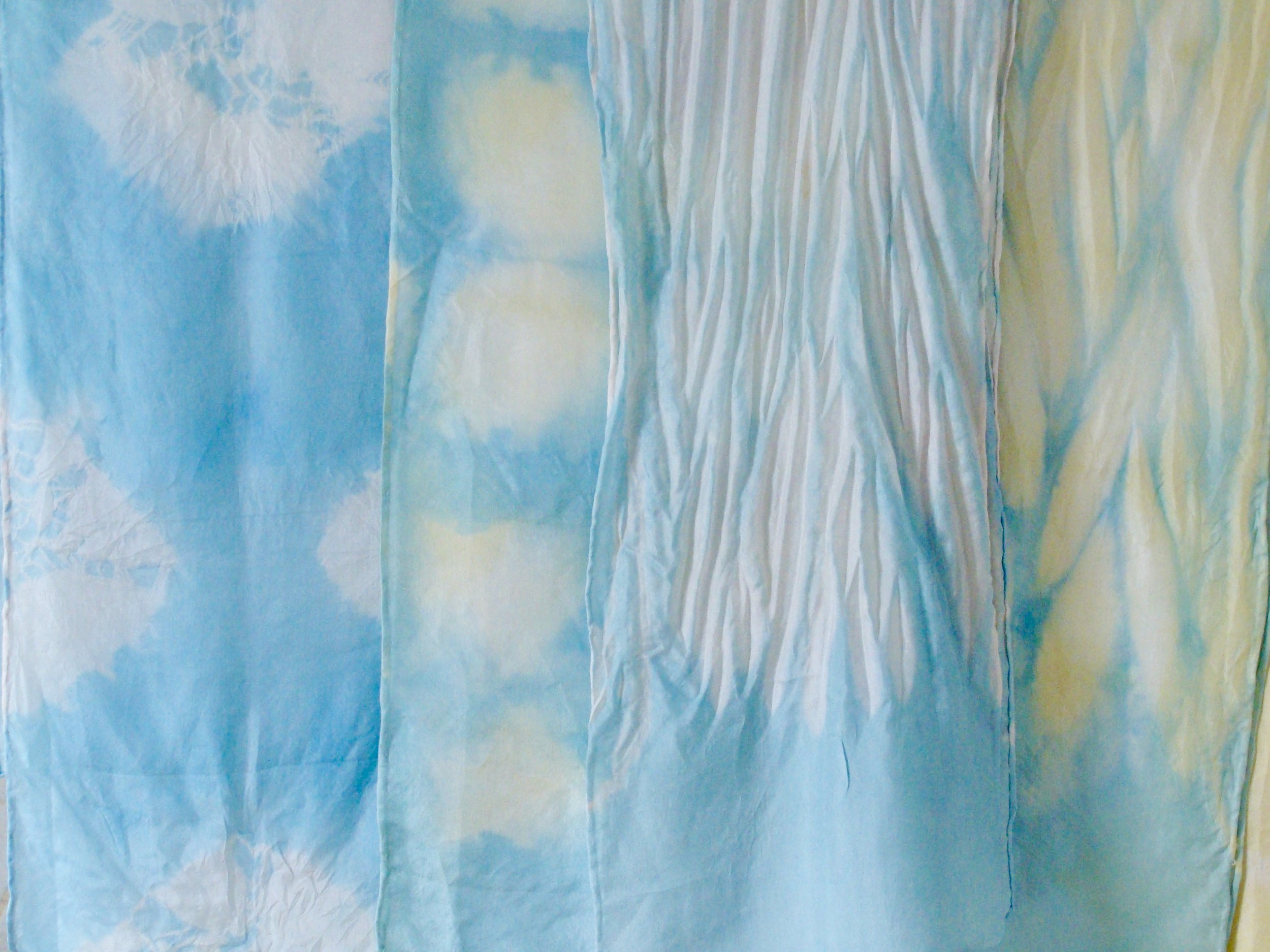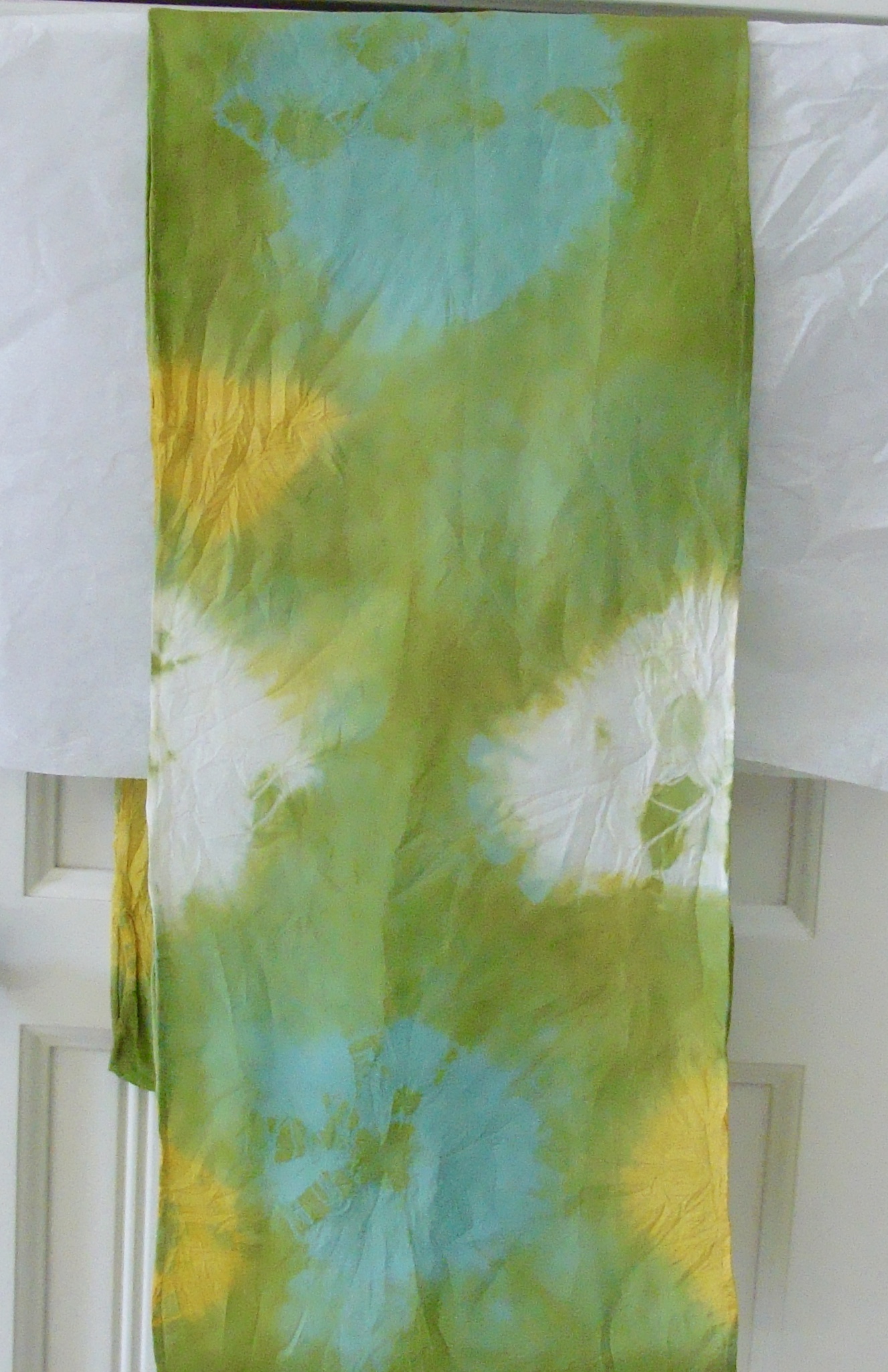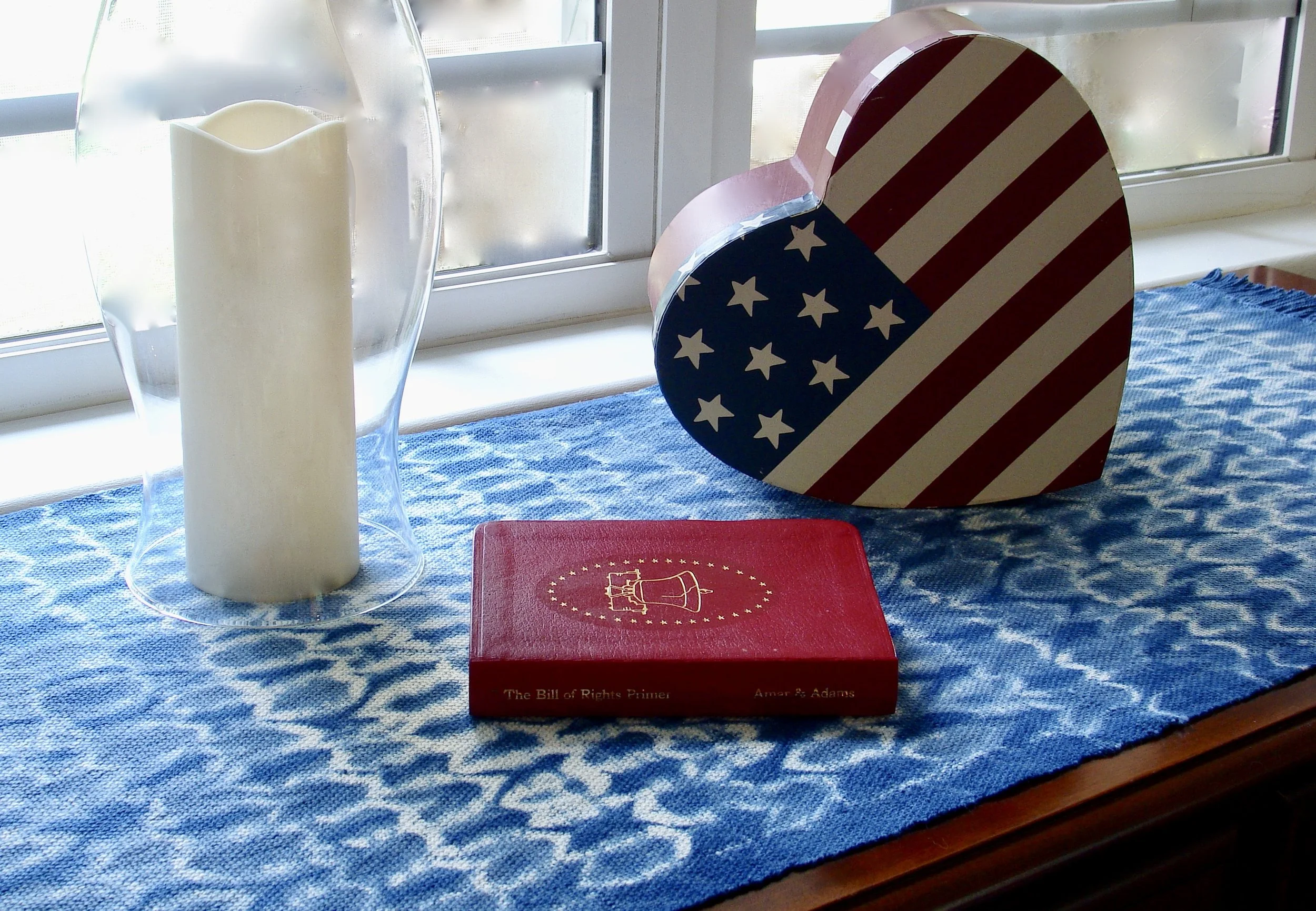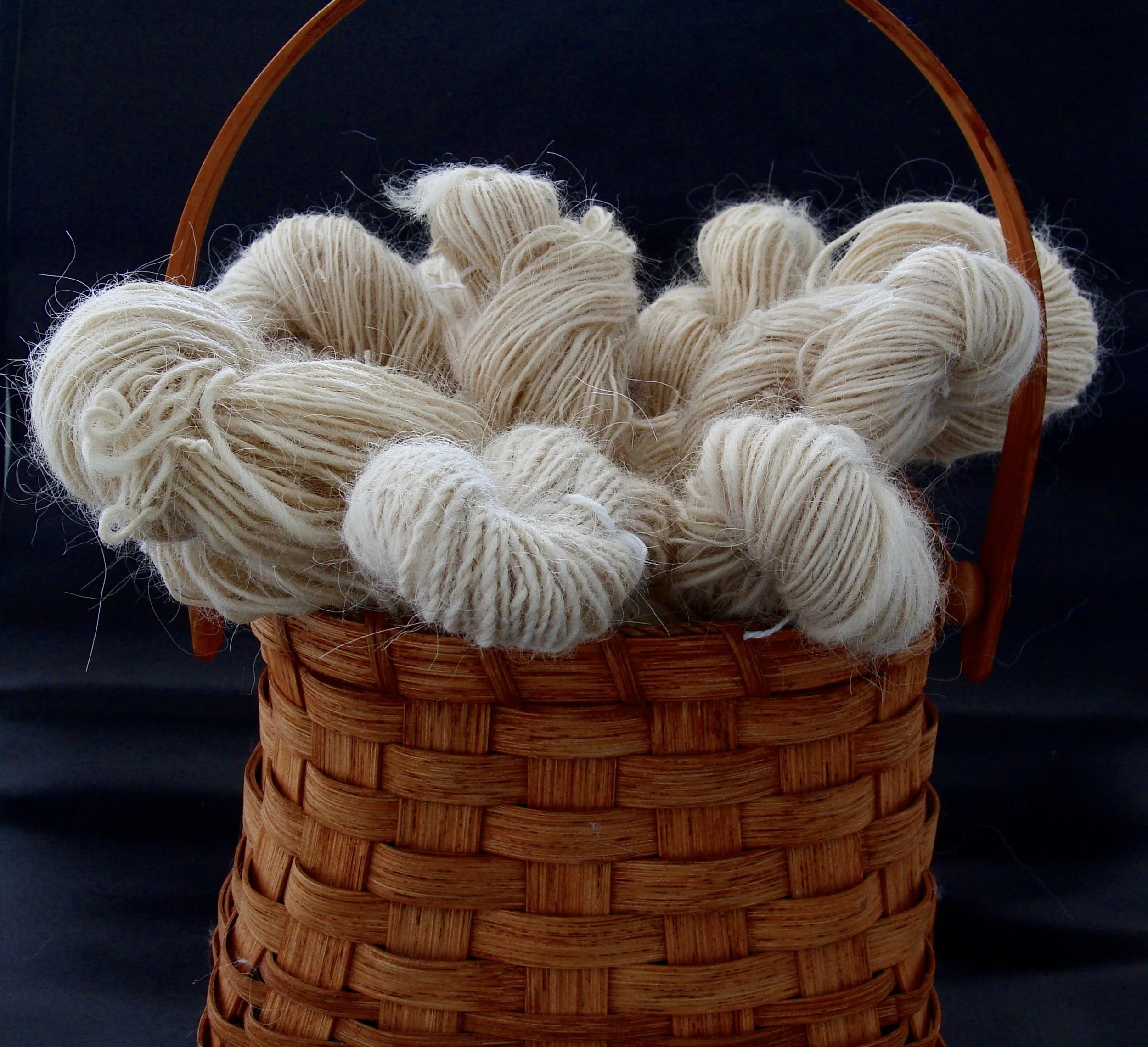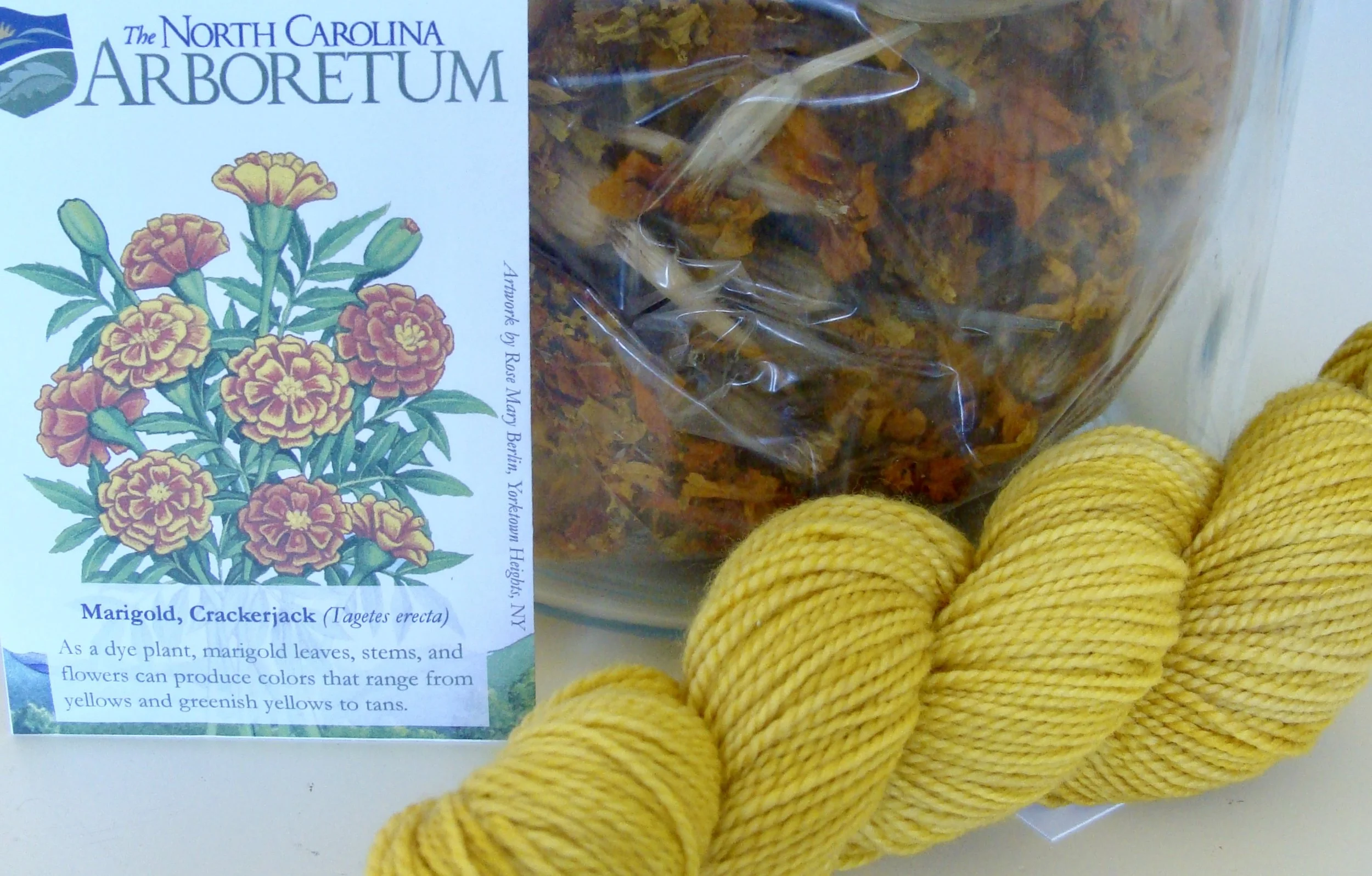Shibori-Dye Resist
This is Part 1 of a 2 part series on dyeing fabric using Shibori techniques.
Shibori is a Japanese dyeing technique that creates dye-resists in the cloth by folding, pleating, and/or bunching the fabric. These folds are then bound with stitching, clamps or rubber bands, preventing the dye from penetrating. Any fabric that is exposed and not compressed by the resist will be dyed while the resist area will remain white (or the color of the underlying cloth). There may also be a gradient or halftones of color depending on the thickness and manner of the folds and bindings.
I dyed a number of silk scarves to demonstrate shibori techniques. Above, you can see several different folds and bindings ready to go into the dye pot.
Here are the scarves coming out of the indigo dye bath (more on dyeing with indigo in Part 2). My favorite part of the shibori process is when the shapes are untied and the one of a kind designs are revealed.
There are many different Shibori techniques that are created by varying the folds and bindings. Here are a few I have tried.
Kanoko Shibori
Hand Dyed Charmeuse Silk Scarf
Kanoko shibori is the closest to what you may know as tie-dye. The cloth is pleated or folded and bound with thread or rubber bands to achieve the patterning. This is a good method for creating circular shapes.
Kumo Shibori
Hand Dyed Charmeuse Silk Scarf
Kumo shibori involves wrapping cloth, sometimes around objects, into finger-like bindings. The bound portions will produce spider-web-like circles.
Itajime Shibori
Hand Dyed Charmeuse Silk Scarf
Itajime shibori, also known as pressure resist, compresses folded fabric between two pieces of wood or plastic, with the pattern determined by how the fabric is folded. Any fabric that overlaps the edge of the blocks will be dyed.
Itajime Shibori
Hand Dyed Charmeuse Silk Scarf
Variations on the Itajime technique can be created by using blocks of a different size or shape.
Arashi Shibori
Hand Dyed Habotai Silk Scarf
Arashi shibori, also known as Bomaki, folds and wraps the fabric around a cylinder. I used a piece of PVC pipe to create the third from left scarf above.
Layering
Hand Dyed Habotai Silk Scarf
You can create complex designs by using Shibori techniques as a way to layer or overdye patterns. Here, I bound areas of the scarf and dyed first with marigold. Then I left some areas bound (remain white) and bound new areas before placing into a Saxon Blue dye bath. Now, the previously bound areas dyed blue, the newly bound areas remained yellow, and the overdyed areas are green.
Traditionally, indigo is a favorite dye for shibori because it does not readily penetrate the folds and so results in crisp, well defined patterns. However, you can create beautiful effects with other natural and synthetic dyes. I have used marigold, black walnut, Saxon blue, and hibiscus (see this post and these scarves).
In Part 2 of this series, I'll talk about woven shibori and walk through a project I did using this technique.



